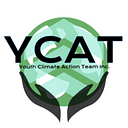Online Learning’s Effect on the Environment
In 2020, the coronavirus pushed everyone into their homes and introduced virtual learning where students attended classes and met instructors from home instead of commuting to school. After a year of this virtual learning, it is valuable to understand what the benefits of it exactly are, especially for the environment.
Traditional schools use textbooks and paper copies of homework, quizzes and assignments. Consequently, paper makes up 60 percent of school waste, and one ton of it equals sixteen trees. On the other hand, online learning has forced students to read and complete classwork electronically, helping cut down on huge amounts of paper waste in landfills. In-person schools also use up a lot of buildings and electricity: energy consumption for regular classrooms produces 220 pounds of carbon dioxide, whereas an online student produces 10 pounds. Moreover, online learning consumes 90% less energy than traditional learning and saves the additional costs of constructing school buildings, protecting the environment.
Retention rates, which indicate how well a school ensures academic completion and success, also tend to be higher in online learning due to the decrease in stressors and pressures otherwise present in a traditional school. The Research Institute of America found that electronic learning increased retention rates by 25 to 60 percent, compared to the low rates of face-to-face training at 8 to 10 percent. Students feel more at peace because they can be in control of the learning process by going at their own pace. Rather than having to jot everything down in class and work to not forget anything, students are able to access information in a few clicks and refresh their memory when needed.
Online education may become more popular in the future with the prevalence of technology and various types of learning through live streaming, talk shows, webinars, interviews and more. Students are also more likely to prefer the reduction in pressure and greater flexibility in their schedules that allow for a more positive learning experience. To cap it all off, virtual learning offers the potential of reducing waste and conserving natural resources, saving both the environment and money for students and teachers.
